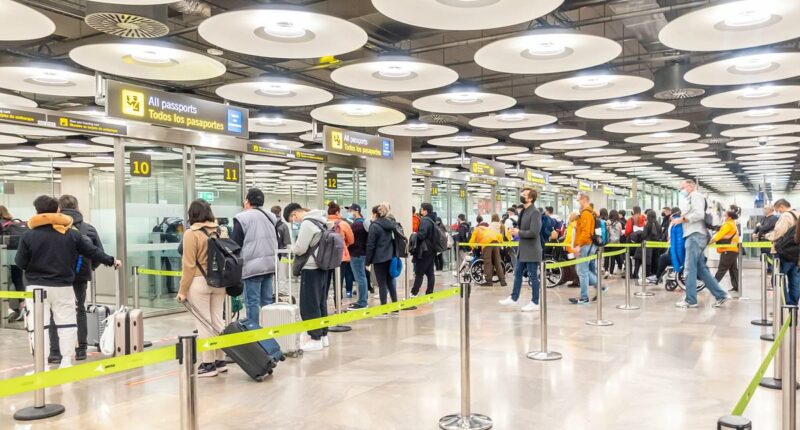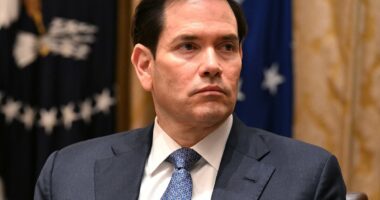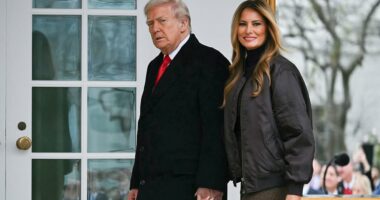Share this @internewscast.com
The Trump administration is introducing a new $250 ‘visa integrity fee’ for travelers entering the United States, a move that aligns with its ongoing immigration restrictions. Effective October 1, this additional charge will further complicate travel for those from non-visa waiver countries such as Mexico, Argentina, India, Brazil, and China.

This fee will raise the total visa cost to $442, making it one of the most expensive visitor fees globally, according to the US Travel Association. Tourists must pay this one-time fee when their visa is issued. Introduced under Trump’s Big Beautiful Bill Act, the fee could negatively impact the struggling tourism sector, already challenged by President Trump’s policies.

Trump’s strained relations with certain global leaders and his tariff measures have led some tourists, especially Canadians, to pledge not to vacation in the U.S. Government data reveals a 3.1 percent decrease in overseas travel to the US in July, totaling 19.2 million visitors. This marks the fifth month of reduced numbers this year, despite predictions that 2025 would exceed the pre-pandemic visitor number of 79.4 million. “Adding any friction to the traveler experience will inevitably decrease travel volumes,” noted Gabe Rizzi, President of Altour, a global travel management company. As summer ends, the fee will become a significant consideration when planning travel budgets and documentation.

The new visa fee will particularly impact countries in Central and South America, which have been strong contributors to U.S. travel growth this year. Travel from Mexico to the U.S. increased by nearly 14% in 2025, per the National Travel and Tourism Office. Arrivals from Argentina saw a 20% increase, and Brazil 4.6%. Overall, travel from Central America rose by 3% and South America by 0.7%, compared to a 2.3% decline from Western Europe.

The World Travel & Tourism Council projects international visitor spending in the US to fall below $169 billion this year, down from $181 billion in 2024. The visa fee contributes to the negative perception of the US under Trump, whose immigration stance, cuts in foreign aid, and broad tariffs have reduced its attractiveness as a destination. This persists even with major events such as the 2026 FIFA World Cup and Los Angeles 2028 Olympics approaching. In addition, the Trump administration recently proposed new regulations to limit visa durations for students, cultural exchange participants, and media members.

Two months prior, Trump also enforced a travel ban affecting tourists from 12 mainly African and Middle Eastern countries, including Afghanistan, Myanmar, Chad, the Republic of Congo, Equatorial Guinea, Eritrea, Haiti, Iran, Libya, Somalia, Sudan, and Yemen.

It also imposes heightened restrictions on people from Burundi, Cuba, Laos, Sierra Leone, Togo, Turkmenistan and Venezuela who are outside the U.S. and don’t hold a valid visa. The impacted countries had ‘deficient’ screening for passports and other public documents or have historically refused to take back their own citizens, Trump said.

He relied extensively on an annual Homeland Security report of people who remain in the US after their visas expired. Trump also tied that ban to a terrorist attack in Boulder, Colorado, saying it underscored the dangers posed by some visitors who overstay visas.








